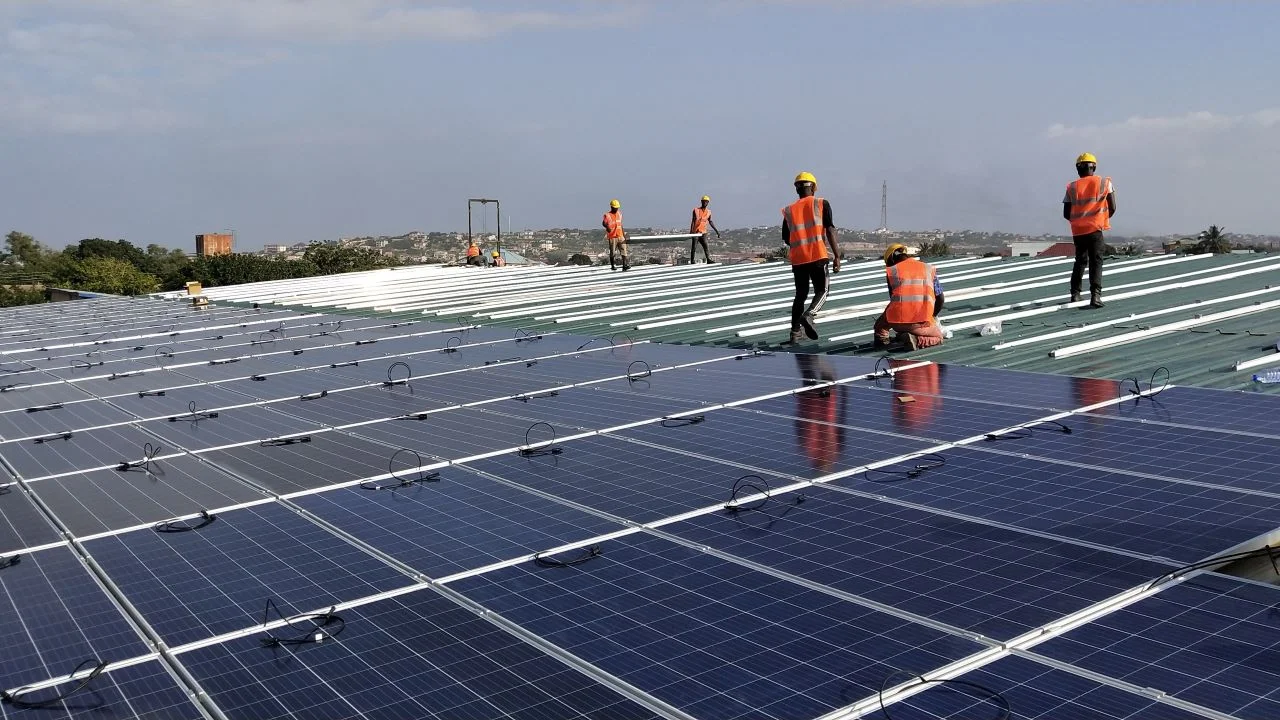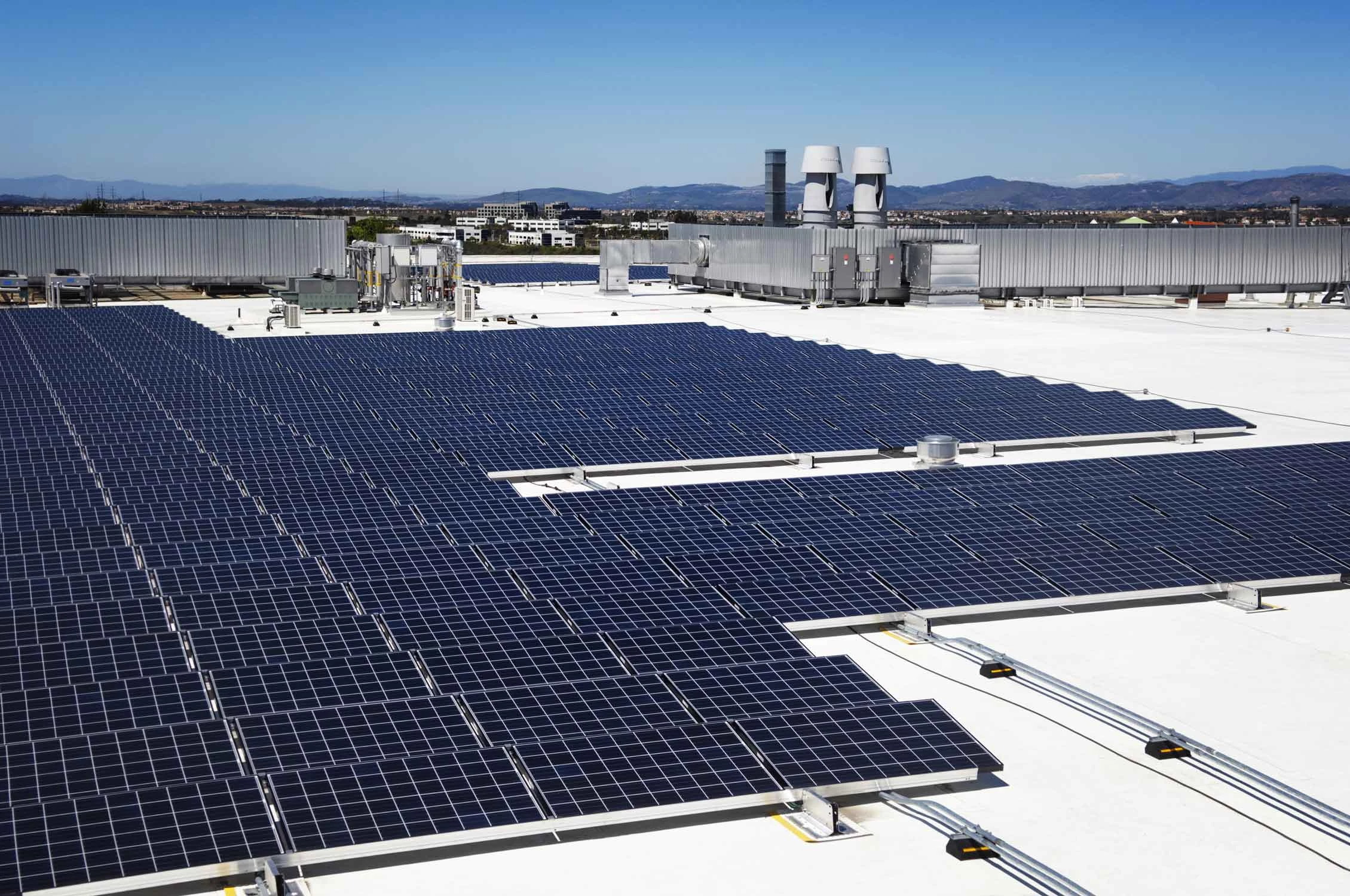The solar energy industry continues to evolve with innovative technologies that improve efficiency, reliability, and long-term cost savings. Among the top advancements are Topcon solar cells and bifacial solar panels, two key technologies that are revolutionizing the way solar power is harnessed and utilized. In this blog, we will dive into a detailed comparison of Topcon vs bifacial solar panels, breaking down their benefits, applications, and how they are shaping the future of solar energy.
Table of Contents
Introduction to Topcon Solar Cells
Topcon (Tunnel Oxide Passivated Contact) solar cells represent a significant leap in solar photovoltaic (PV) technology. Topcon is essentially a new generation of monocrystalline silicon solar cells designed to reduce efficiency losses and improve energy output. This is achieved through a passivation layer that reduces recombination losses, one of the main factors causing energy loss in traditional cells.
One variety of n-type solar cells is the TOPCon cell. A semiconductor material that has been doped with phosphorus to give it a negative charge is used to create n-type cells. Higher efficiency and improved performance in low light levels are only two of this type of cell’s many advantages over p-type cells.
Introduction to Bifacial Solar Panels
Standard solar panels consist of three layers: a top layer of transparent glass that protects the panel and allows sunlight to pass through, a middle layer of silicon that converts solar energy into electricity, and a bottom aluminum frame for support. Bifacial panels differ by replacing the aluminum frame with an additional layer of glass, enabling them to capture reflected light from the ground. You can visualize bifacial panels like an ice cream sandwich, with glass layers on the outside and silicon in the center. They are typically installed to face the sun on one side while the other side collects reflected light.

Topcon vs Bifacial
Efficiency and Performance
When it comes to efficiency and performance, Topcon vs Bifacial solar panels both offer significant advantages over traditional solar technologies, but they excel in different ways.
1. Energy Conversion Efficiency
- Topcon Solar Cells: These cells are known for achieving efficiency rates of over 28%, making them one of the most efficient solar cells currently available. The improved passivation layer reduces recombination, allowing more energy to be harvested from the same amount of sunlight.
- Bifacial Solar Cells: Bifacial panels also have high efficiency rates, with the added benefit of generating up to 30% more energy compared to monofacial panels in ideal conditions. The ability to capture sunlight from both sides makes bifacial technology a great option for maximizing energy output.
2. Performance in Various Conditions
- Topcon Solar Cells: In the Topcon vs Bifacial performance discussion, Topcon cells maintain high efficiency in various environmental conditions, including low light and high temperatures. Their advanced design minimizes energy losses that commonly occur in traditional PERC cells, making them particularly useful in regions with fluctuating weather.
- Bifacial Solar Cells: The performance of bifacial panels heavily depends on the reflective surface underneath. In installations with high ground reflectivity (such as snowy regions or white-painted rooftops), bifacial panels can outperform monofacial panels by a considerable margin. However, their efficiency gain diminishes in low-reflective areas.
Technology Overview
- Topcon Solar Cells: TOPCon technology improves solar cell efficiency, reaching up to 28% conversion rates, surpassing traditional solar cells. It reduces electron recombination at the surface using passivated contacts, enhancing overall efficiency. Silicon dioxide is often used as an insulating material to minimize energy losses, and TOPCon cells feature rear-side contacts to boost light absorption and energy yield, classifying them as N-type cells. The key difference between MonoPERC and TOPCon cells is that MonoPERC cells have passivated contacts on the front, while Topcon cells have them on the rear, typically resulting in higher efficiencies for Topcon.
- Bifacial solar Cells: Bifacial solar panels generate electricity from both sides, capturing sunlight on the front and back. This is made possible by a transparent backing that allows light to reach the rear solar cells. These panels are more efficient and produce higher energy output, especially in areas with high reflected light like snow or near water. Bifacial technology is gaining popularity and can be used in residential, commercial, and industrial applications.
Durability and Longevity
Both Topcon vs Bifacial solar technologies are designed for long-term durability, but there are some key differences in their longevity and performance over time.
1. Topcon Solar Cells: The efficiency of N-type cell PV Modules can go more than 25% unlike PERC Cell has a maximum theoretical efficiency of around 24%. Compared to PERC PV panels TOPCon panels have lower degradation during the 1st year and the 30 years of panel use.
2. Bifacial Solar Cells: The lifespan of bifacial solar panels is higher than that of traditional solar panels with a lifespan of 27 years and it can extend up to 30 years. However, the actual lifespan may vary depending on factors such as weather conditions, maintenance, and usage.
Cost and Availability
The initial cost and availability of solar technologies are always important considerations for businesses and homeowners. Here’s how Topcon solar cells and bifacial solar panels compare in terms of pricing and market availability.
1. Topcon Solar Cells
- Cost: Being a newer and more advanced technology, Topcon solar cells tend to be more expensive than traditional PERC cells. However, the improved efficiency and longevity may lead to better long-term savings on energy bills, making the initial investment worthwhile.
- Availability: Topcon technology is still emerging, and while it is becoming more widespread, it may not yet be as readily available as PERC or other standard solar cell technologies.
2. Bifacial Solar Cells
- Cost: Bifacial panels are generally more expensive than monofacial panels due to their dual-glass structure and the additional manufacturing process involved. However, their ability to generate more energy can offset the higher upfront cost in many cases.
- Availability: Bifacial technology is already widely available in the market, with many leading manufacturers offering bifacial models for commercial, industrial, and residential applications.

Applications
The choice between Topcon and bifacial solar technologies often depends on the specific application and location of the solar installation.
1. Topcon Solar Cells
- Best Applications: Topcon cells are ideal for use in residential, commercial, and utility-scale projects where high energy efficiency is required. Their superior performance in low-light and high-temperature conditions makes them suitable for regions with varied climates.
- Target Markets: Topcon technology is becoming popular in countries with aggressive renewable energy targets, including China, Europe, and the US.
2. Bifacial Solar Cells
- Best Applications: Bifacial panels are particularly effective in installations where the reflective surface beneath the panels can enhance energy production. These panels are commonly used in ground-mounted solar farms, floating solar arrays, and large commercial rooftop installations.
- Target Markets: Bifacial technology is gaining traction in regions with high solar radiation and reflective surfaces, such as desert areas, snowy regions, and industrial zones with reflective surfaces.
Performance in Different Conditions
1. Topcon Solar Panels
Topcon cells perform exceptionally well in a variety of environmental conditions. They maintain high efficiency even in low-light conditions or at high temperatures, making them versatile for installations across diverse climates. Their enhanced passivation layer reduces energy losses, making them a great choice for regions with variable sunlight or heat exposure.
- Performance Strength: Consistent efficiency in low-light and high-temperature environments.
2. Bifacial Solar Cells
Bifacial panels excel in areas where there is significant reflective light, such as snowy regions, deserts, or locations with reflective ground surfaces. However, they are less efficient in shaded areas or low-reflectivity environments, such as those with grassy terrain. The overall energy gain from bifacial panels depends heavily on the surrounding environment and the installation’s layout.
- Performance Strength: High performance in areas with reflective surfaces, but limited gains in shaded or low-reflectivity regions.
Installation Considerations
The installation process for both Topcon vs Bifacial solar panels differs slightly, primarily due to their design characteristics and structural requirements.
1. Topcon Solar Cells
- Installation: Topcon solar cells are generally installed like standard monofacial solar panels. They do not require special mounting systems, making them easier to integrate into existing solar arrays. Their slightly higher efficiency makes them a good fit for areas with space constraints.
- Mounting Systems: Standard mounting systems can be used for Topcon installations, and the process is similar to that of PERC or monocrystalline panels.
2. Bifacial Solar Cells
- Installation: Installing bifacial panels requires careful consideration of the reflective surfaces below. For maximum efficiency, bifacial panels should be mounted on raised structures or surfaces that enhance sunlight reflection, such as white roofs, gravel, or snow.
- Mounting Systems: Special mounting systems may be needed for bifacial panels to ensure they capture the maximum amount of light from both sides. Adjustable or tilted mounting systems can help optimize performance by allowing sunlight to reach the rear side of the panels.
Cost and Return on Investment (ROI)
1. Topcon Solar Cells
Topcon technology is relatively new, and as such, the initial cost of these panels is higher than traditional PERC or monocrystalline solar panels. However, their high efficiency and long-term reliability can offer a quicker ROI in areas with limited space or difficult environmental conditions, where every bit of efficiency counts. Higher upfront investment with faster ROI due to higher energy efficiency.
2. Bifacial Solar Cells
Bifacial panels also tend to be more expensive than standard monofacial panels due to their advanced construction and dual-glass design. However, their ability to produce up to 30% more energy, especially in reflective environments, can significantly reduce payback time, making them a cost-effective option for large-scale projects. Higher initial cost, but faster ROI when installed in ideal conditions with reflective surfaces.

Environmental Impact of Topcon vs Bifacial Solar Panels
Both Topcon vs Bifacial solar technologies have a positive environmental impact by promoting renewable energy adoption. However, the way they influence sustainability differs slightly.
1. Topcon Solar Cells
- Environmental Benefits: Topcon technology’s high energy efficiency means more electricity is generated from the same amount of sunlight, reducing the overall need for additional solar panels and associated raw materials. This can lower the environmental footprint of solar installations.
2. Bifacial Solar Cells
- Environmental Benefits: Bifacial panels offer the advantage of generating more energy from the same area, reducing land use and maximizing solar potential. Their dual-glass structure also reduces the need for materials like plastic back sheets, which can have a more positive environmental effect.
Conclusion: Which Is Better – Topcon vs Bifacial?
Topcon vs Bifacial solar panels depends largely on the specific needs and conditions of the solar project.
- Topcon solar cells offer top-tier efficiency and durability, making them an excellent choice for regions with variable weather conditions or limited installation space.
- Bifacial solar Cells, on the other hand, are a great solution for large-scale projects where ground reflectivity can be maximized, providing a substantial boost in energy output without requiring additional land or panel area.
For projects that require high efficiency in limited space or extreme environmental conditions, Topcon technology may be the better choice. For installations where reflection can be leveraged, such as on snow, sand, or water, bifacial panels might be the superior option.
In the end, both technologies represent significant advancements in solar energy, each offering unique benefits that cater to different types of solar projects. Solar installers, developers, and energy consumers should carefully evaluate their specific conditions and energy needs to determine which technology will provide the best long-term value.
Explore Your Solar Options Today! Ready to take the next step in your solar journey? Contact us at Soleos Solar to discuss how Topcon or bifacial solar panels can meet your energy needs and help you save on electricity costs!
